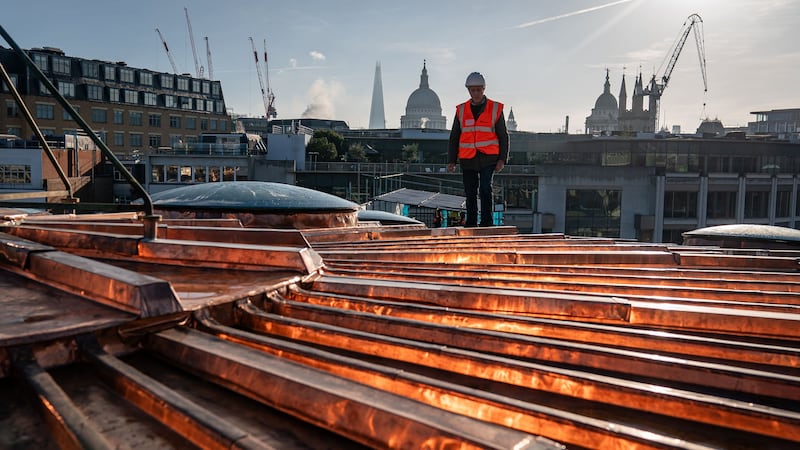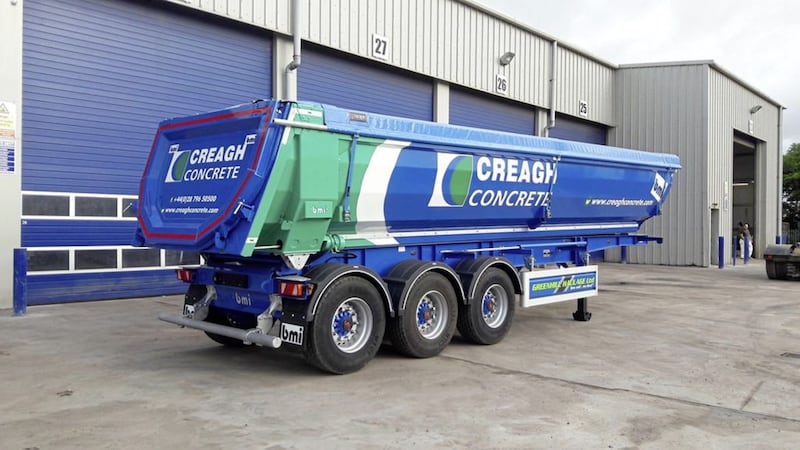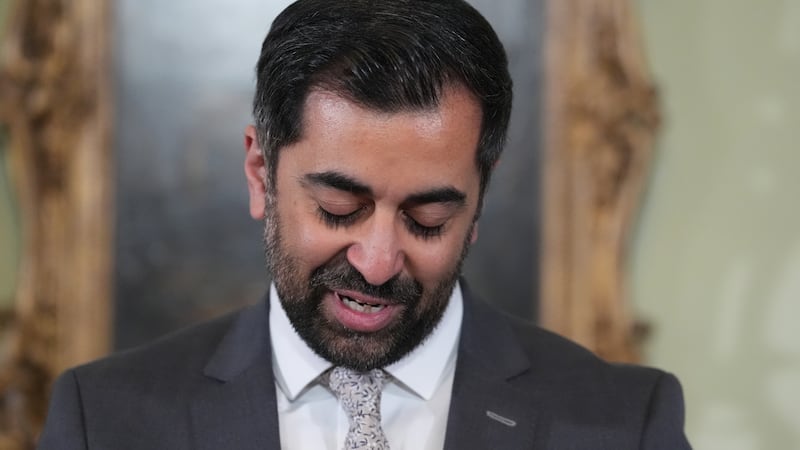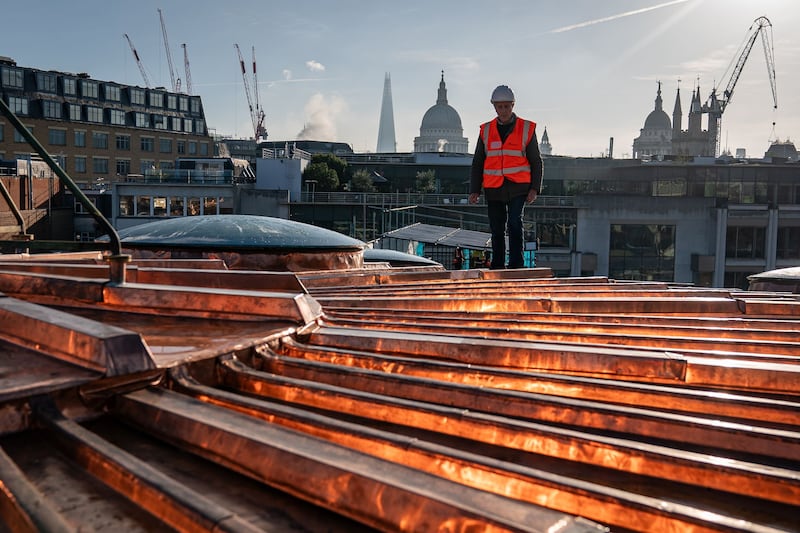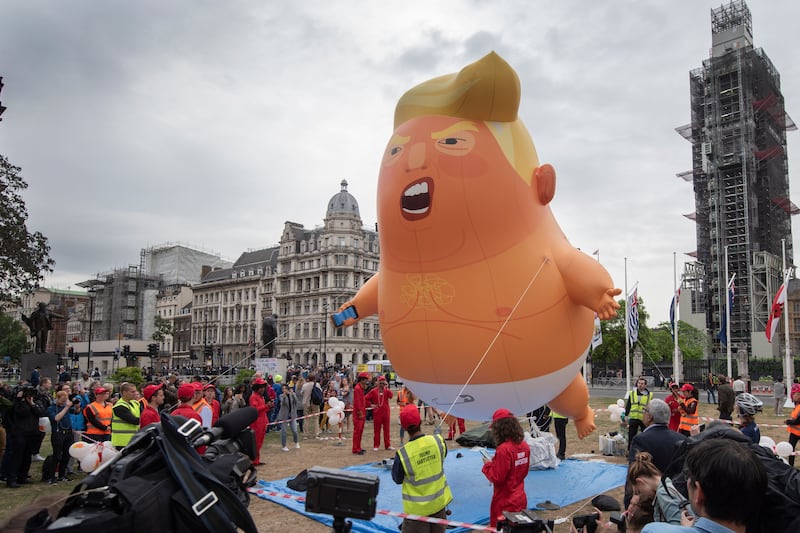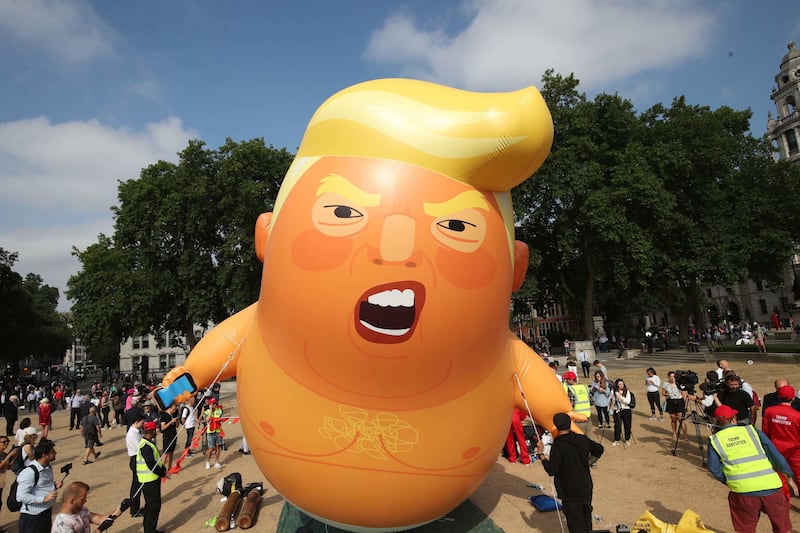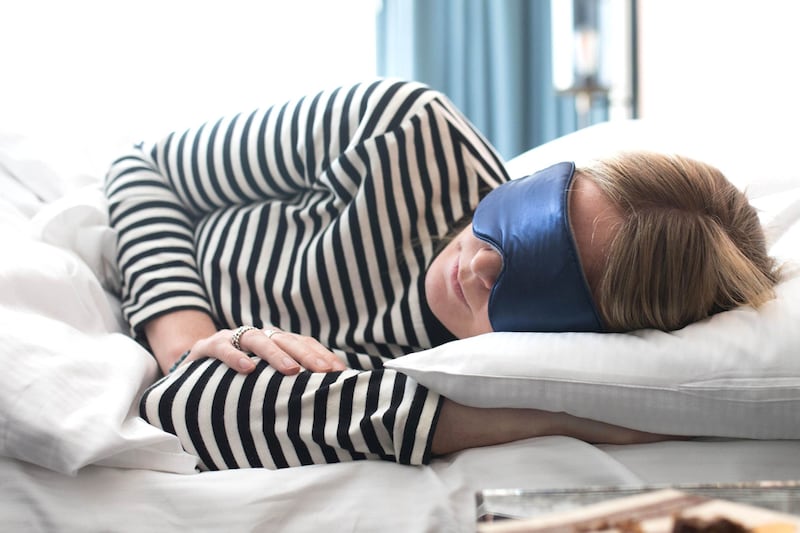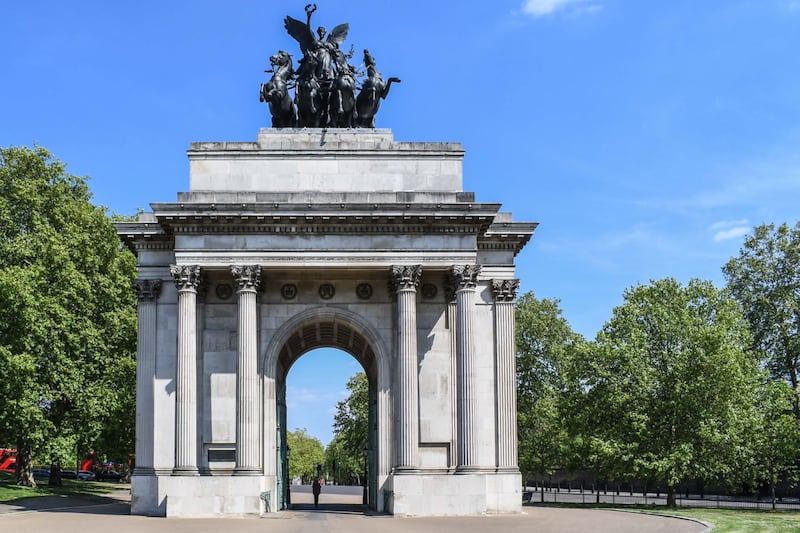The transformation of historic London market buildings into a museum is a step closer after the restoration of the roof.
Coppersmith Chris Johnson, 83, placed the last copper sheet on the dome at Smithfield Poultry Market, 60 years after he worked on the original roof in the 1960s.
It brings to an end a four-year project to repair the 70 by 40-metre roof, which was the largest single-span concrete roof in Europe at the time of its construction, to pave the way for the relocation of the Museum of London onto the site.
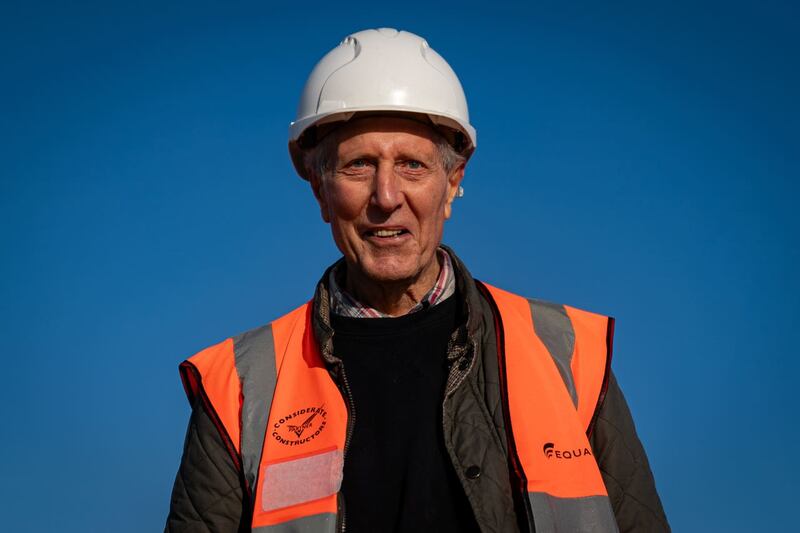
Mr Johnson, who was an apprentice when he worked on the original roof, said he was still working because copperwork skills are in short supply because of advances in technology.
He said: “In the late sixties all the copperwork went mechanical and within five years the skills had gone. Now we have all these restoration works that need doing by hand and there’s no one to do it so that’s why I’m still working.
“They’ve done a good job up here considering the problems they’ve had. The copper’s much heavier now, which doesn’t help at all. We also had to use foam glass insulation, which is very hard to work with.”
The project will see the Museum of London move from its former London Wall base to Smithfield Markets, aiming to reopen first in the Annexe Market building in 2026 followed by the poultry market in 2028.
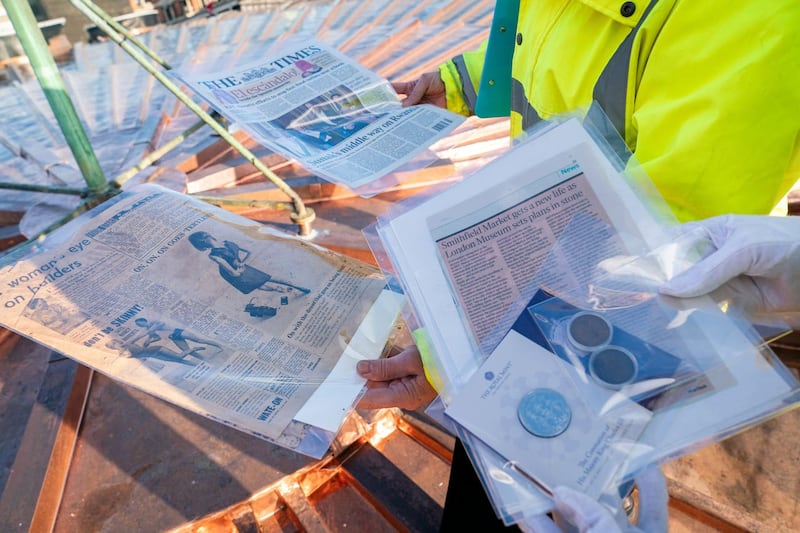
Sharon Ament, the Museum of London’s director, said: “This is quite literally the high point of this part of the project. It’s been many years to get to this point. We started this whole project in 2017 and now look at us.
“It’s really emotional to have Chris up here, it’s amazing. We are due to open this part of the building in 2028. It’s watertight, it’s thermal and it’s fabulous.”
The land that Smithfield Market was built on was home to London’s livestock markets from as early as the 12th century, and the first building at the site was the Central Meat Market, designed by architect Sir Horace Jones and completed in 1868.
Seven years later, in 1875, the first poultry market building opened but it was destroyed by a major fire in 1958 and then replaced by the current building in 1963. The General Market was added in 1883 and the Annexe Market in 1888.
When pulling up the old copper, workers from subcontractors Full Metal Jacket discovered an original penny coin and a newspaper article on the first women in the construction industry put there by the coppersmiths in 1963.
These artefacts were re-inserted along with new additions including a coin from 1963, a newly minted coin commemorating the coronation of the King, a photograph of the project crew and a copy of The Times.
